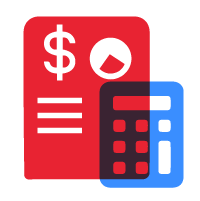Managing your finances well is key to running a successful business. When your accounting workflow is organized, you’re able to track expenses, manage invoices, and handle taxes more easily. A clear process helps you avoid errors, save time, and keep everything running smoothly.
In this guide, you’ll learn how to create an efficient accounting workflow that simplifies your daily tasks. We’ll break down its key parts, share real-life examples, and give you a step-by-step plan to build a system that works for you.

What is an Accounting Workflow?
An accounting workflow is a step-by-step process that organizes financial tasks in a structured way. It outlines the specific actions accountants and bookkeepers take, from recording transactions and processing invoices to reconciling accounts and generating financial reports. Each step follows a standard procedure to accurately manage financial data.
This workflow serves as a roadmap for handling financial activities, allowing team members to know what tasks to complete and in what order. It often involves workflow automation and accounting workflow software to streamline processes, making it easier to assign tasks and track progress.

Essential Components of an Accounting Workflow
To create a smooth and efficient accounting workflow, you need to include key components that help organize tasks, improve accuracy, and keep everything running on schedule. Here are the essential elements to consider:
Task Management
Assigning tasks to your team members ensures that everyone knows their responsibilities and deadlines. Without proper task management, work may pile up, leading to delays and errors. Using workflow management tools or accounting workflow software enables you to keep track of assignments, set priorities, and monitor progress.
Client Communications
Keeping an open line of communication with clients is crucial in accounting. Whether you need financial documents, approvals, or clarification on transactions, regular updates prevent miscommunication and delays. Setting up scheduled check-ins or using client communication tools will help you stay organized and responsive.
Standard Procedures
Having a set of standard procedures makes accounting processes more consistent and reliable. When every task follows a structured process—whether it’s recording expenses, reconciling bank statements, or processing payroll—it minimizes confusion and mistakes. Documenting these procedures also makes it easier to train new team members and maintain quality across all financial tasks.
Workflow Automation
Manually handling every accounting task is time-consuming and prone to errors. By using accounting workflow software, you can automate repetitive tasks like invoice processing, data entry, and report generation. Automation not only saves time but also reduces human error, allowing you to focus on more complex financial matters that require expert attention.
Onboarding Processes
Bringing in new clients requires a smooth and structured approach. A well-defined client onboarding workflow gives you the ability to collect necessary information, set expectations, and introduce your services clearly. By streamlining the onboarding process, you avoid unnecessary delays and compels the clients to feel confident in your financial expertise from the start.
Service Delivery
Delivering accurate and timely financial services is the foundation of a strong accounting workflow. Whether you’re handling bookkeeping, tax preparation, or advisory services, maintaining efficiency and accuracy is essential. Ensuring that your workflow process is well-structured allows you to meet client expectations and comply with financial regulations without unnecessary stress or last-minute scrambling.

Examples of Accounting Workflows
Having a clear accounting workflow helps you stay organized, avoid mistakes, and save time. Here are ten common accounting workflows that will make your financial processes smoother and more efficient:
Client Onboarding Workflow
Bringing in a new client? A structured onboarding process sets the foundation for a strong working relationship.
- First Meeting: Talk with your client about their needs and how you can help.
- Gather Documents: Collect financial records, tax forms, and other important papers.
- Set Up Systems: Add them to your accounting software and organize their data.
- Assign Tasks: Make sure your team knows their roles and responsibilities.
Monthly Financial Reporting Workflow
Keeping track of finances every month allows you to stay on top of things and make informed decisions.
- Record Transactions: Enter all sales, expenses, and payments into your system.
- Check for Mistakes: Review accounts to ensure everything adds up correctly.
- Create Reports: Generate balance sheets and income statements.
- Meet with Clients: Go over reports, explain the numbers, and offer insights.
Tax Preparation Workflow
Preparing taxes can be stressful, but a step-by-step process makes it manageable.
- Collect Tax Documents: Gather receipts, payroll records, and other required paperwork.
- Verify Information: Double-check numbers for accuracy.
- Fill Out Tax Forms: Use accounting software to complete the required tax forms.
- Submit and Confirm: File the taxes on time and let the client know it’s done.
Payroll Processing Workflow
Paying employees on time is essential for keeping them happy and your business running smoothly.
- Collect Payroll Data: Gather employee hours, salaries, and deductions.
- Calculate Pay: Use payroll software to figure out wages, taxes, and benefits.
- Approve Payments: Have a manager review and sign off on payroll.
- Distribute Paychecks: Send out payments and issue pay stubs.
Invoice Processing Workflow
Managing invoices properly guarantees on-time payments and a good cash flow.
- Create and Send Invoices: Bill clients for the work you’ve done.
- Track Payments: Keep an eye on due dates and incoming payments.
- Send Reminders: Follow up with clients if payments are late.
- Reconcile Records: Match payments with invoices in your system.
Expense Management Workflow
Tracking expenses helps you control costs and prevent overspending.
- Submit Expenses: Employees send in receipts for reimbursement.
- Review and Approve: Check that expenses follow company policies.
- Process Payments: Reimburse employees for approved expenses.
- Keep Records: Store receipts and expense reports for future reference.
Accounts Payable Workflow
Paying vendors and suppliers on time keeps your business in good standing.
- Receive Invoices: Collect bills from suppliers and service providers.
- Check for Accuracy: Make sure the charges are correct.
- Approve Payments: Get management approval before paying.
- Process Payments: Send payments before the due date to avoid late fees.
Accounts Receivable Workflow
Keeping track of what customers owe you helps maintain steady cash flow.
- Send Bills: Invoice customers for products or services.
- Monitor Payments: Keep track of who has paid and who hasn’t.
- Follow Up: Send reminders to customers with overdue payments.
- Record Payments: Mark invoices as paid and update records.
Budgeting and Forecasting Workflow
Planning your finances enables you to prepare for the future and avoid surprises.
- Gather Financial Data: Review past expenses and revenue.
- Create a Budget: Set limits for different business expenses.
- Adjust as Needed: Update budgets based on actual spending and income.
- Monitor Progress: Track how well you’re sticking to the budget and make changes if necessary.
Audit and Compliance Workflow
Staying compliant with financial rules steers your clear from penalties and keeps your business in good standing.
- Review Financial Records: Check for errors or missing information.
- Prepare Documentation: Gather reports, invoices, and tax filings.
- Ensure Compliance: Make sure your records follow tax laws and accounting standards.
- Submit Reports: Provide documents to auditors or regulatory agencies if needed.
Step-by-Step Guide to Building an Efficient Accounting Workflow
Creating a smooth accounting workflow doesn’t have to be complicated. With the right approach, you can improve accuracy, save time, and keep everything running efficiently. Follow these five steps to build a better process:
1. Review Your Current Process
Take a close look at how you currently handle accounting tasks. Are there steps that take too long or cause frequent mistakes? Identifying problem areas will help you find ways to make things easier and more efficient.
2. Set Clear Goals
Think about what you want to improve. Do you need to speed up monthly reports? Reduce errors? Improve client communications? Setting clear goals provides you with perspective to focus on the most important changes.
3. Create a Structured Workflow
Map out each step of your accounting process, from recording transactions to generating reports. Assign tasks to the right team members, set deadlines, and establish a clear system to keep everything on track.
4. Use Automation Tools
Take advantage of accounting workflow software to automate repetitive tasks such as data entry and invoicing. This not only saves time but also reduces human errors, making your process more reliable.
5. Track and Improve
Regularly check how well your workflow is working. Are tasks being completed on time? Are there still delays or mistakes? Gather feedback from your team and make adjustments to keep improving.

Enhance Your Financial Operations with Outsourced Accounting Services
Keeping your finances in order is essential for running a successful business, but managing an accounting workflow can be overwhelming. From recording transactions to reconciling accounts and preparing reports, each step requires precision and consistency. A well-structured process ensures accuracy and efficiency, but building and maintaining one takes time, effort, and expertise.
Instead of handling it all on your own, why not let Outsource Philippines do the heavy lifting? Our team of experienced accountants uses the latest tools and best practices to manage your financial processes seamlessly. Whether you need bookkeeping, tax preparation, or full-scale financial management, we provide cost-effective, scalable solutions tailored to your needs.
Focus on growing your business while we take care of the numbers. Contact us today to get started!







